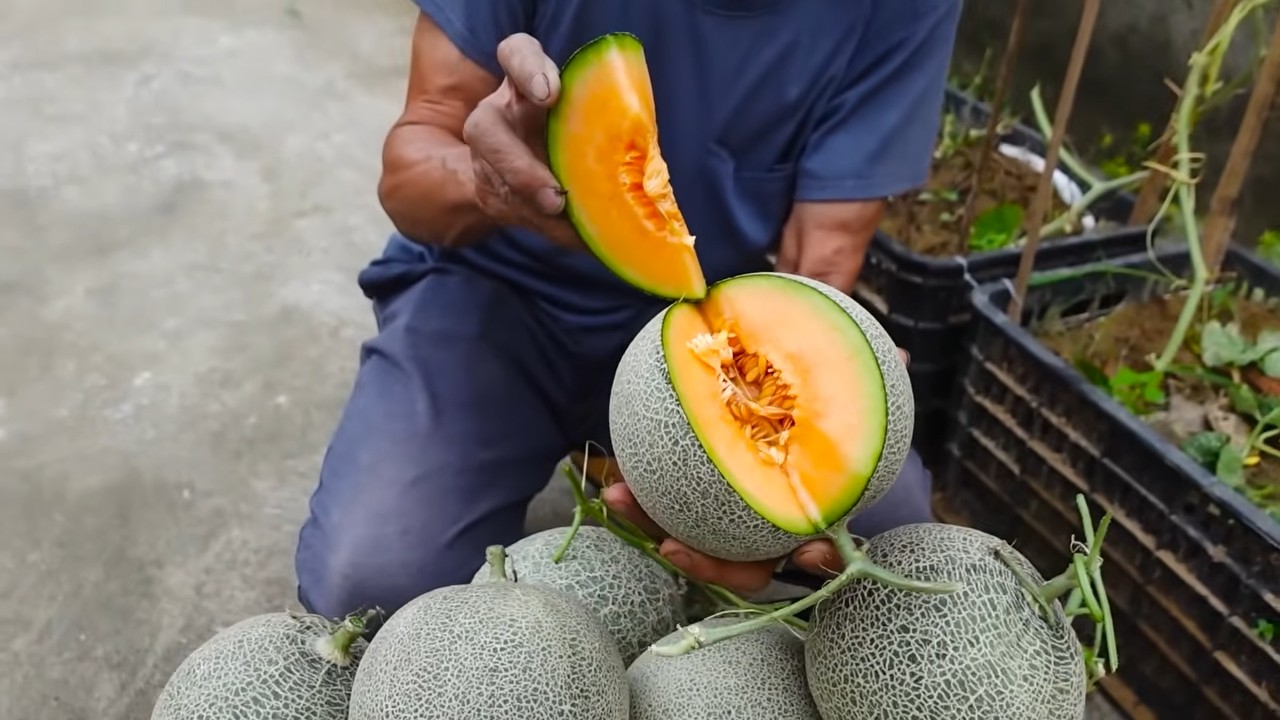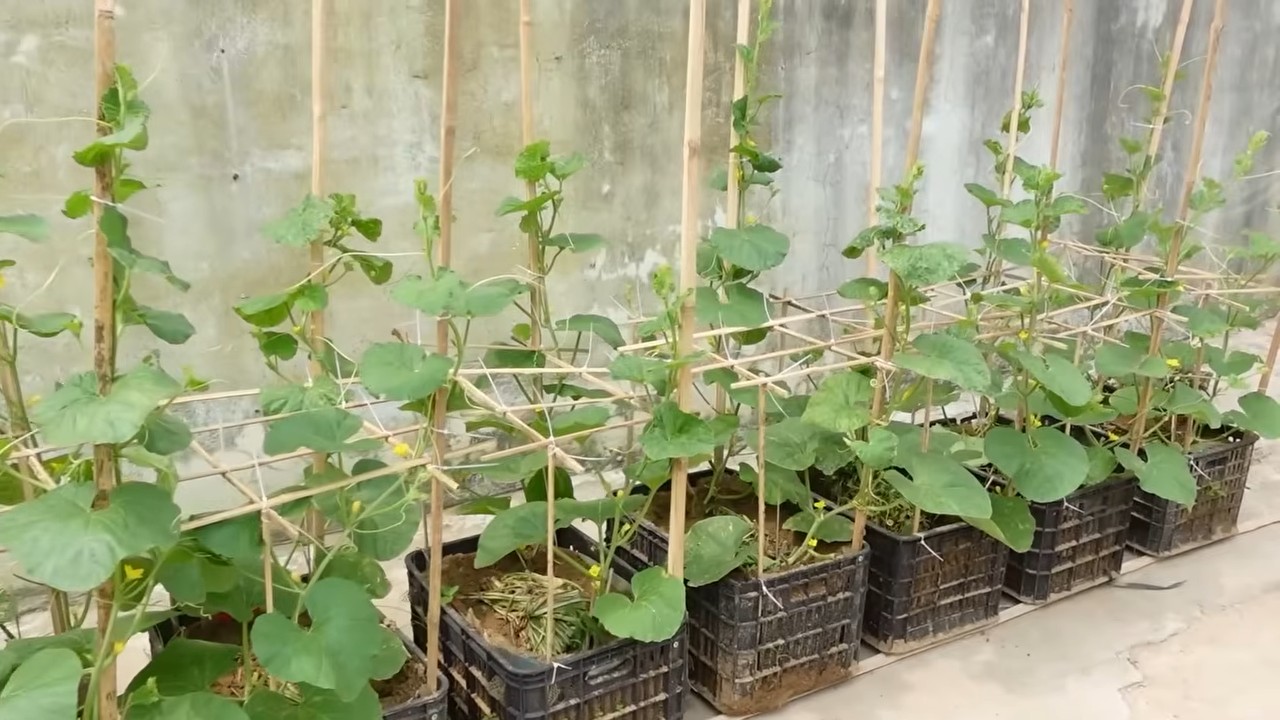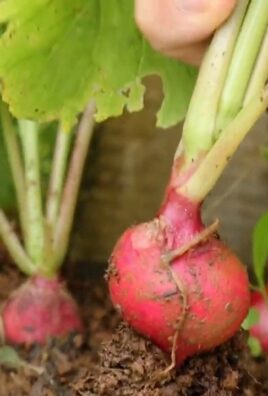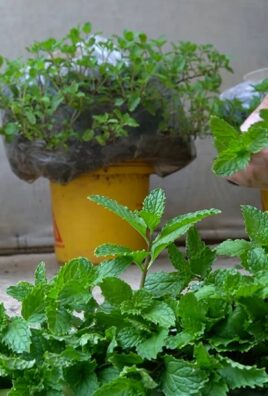Lazy melon growing hacks – sounds like a dream, right? I know I’m always looking for ways to make my gardening life easier, and if you’re anything like me, you’re probably nodding your head right now! Let’s be honest, growing juicy, sweet melons can feel like a full-time job. All that watering, fertilizing, and pest control can be overwhelming. But what if I told you there were simple, almost ridiculously easy ways to get a bountiful melon harvest without breaking a sweat?
Melons have been cultivated for thousands of years, with evidence suggesting their origins trace back to Africa and Asia. They’ve been prized for their refreshing taste and nutritional value across cultures, from ancient Egyptians who buried them with their pharaohs to Roman emperors who enjoyed them as a delicacy. Today, the desire to grow our own food, connect with nature, and enjoy the unparalleled flavor of homegrown produce is stronger than ever.
That’s where these lazy melon growing hacks come in. In this article, I’m going to share some of my favorite time-saving tips and tricks that will help you grow delicious melons with minimal effort. Whether you’re a seasoned gardener or just starting out, these hacks will empower you to enjoy the sweet taste of success without spending hours toiling in the garden. Get ready to kick back, relax, and let these clever techniques do the work for you!

Lazy Melon Growing Hacks: How to Harvest Sweet Melons Without Much Effort!
I love melons! But honestly, I don’t always have the time to spend hours tending to them. That’s why, over the years, I’ve learned a few lazy tricks that still allow me to get a rich harvest. Here are my best tips so you can also harvest delicious melons without much effort!
Preparation: The Key to Lazy Success
Before we start, good preparation is key. This will save you a lot of time and effort later on.
- Choose the right melon variety: Some varieties are simply more robust and easier to care for than others. Watermelons like ‘Sugar Baby’ or ‘Bush Sugar Baby’ are relatively undemanding. For honeydew melons, ‘Honey Gold’ or ‘Early Dew’ are good options. Cantaloupe melons like ‘Athena’ or ‘Ambrosia’ are also relatively easy to grow. It’s best to find out which varieties thrive in your region before buying.
- The right location: Melons love the sun! Choose a location that gets at least 6-8 hours of direct sunlight per day. They also need a lot of space, so plan accordingly.
- Prepare the soil: Melons need well-drained, nutrient-rich soil. I always mix in plenty of compost before planting. This saves me from having to fertilize later. You can also add some organic fertilizer like horn shavings or bone meal.
- Starting seeds indoors (optional, but recommended): To give the melons a head start, you can start them indoors. This is especially useful in cooler regions.
Step-by-Step Guide: Planting Melons for the Lazy
Now let’s get down to it! Here I’ll show you how to plant your melons without wearing yourself out.
- Sow seeds (if starting indoors): If you’ve decided to start seeds indoors, sow them in small pots about 3-4 weeks before the last expected frost. Use seed starting mix and keep it moist, but not wet. Place the pots in a warm, bright place.
- Planting outdoors: Once the danger of frost has passed and the soil temperature is at least 18°C (65°F), you can plant the melon seedlings outdoors. Be sure to acclimate them to the sun beforehand (hardening off). To do this, place them outdoors for a few hours each day for several days.
- Prepare planting holes: Dig holes that are slightly larger than the root balls of the plants. The distance between plants should be about 60-90 cm (24-36 inches), depending on the variety. For watermelons, which spread out a lot, plan for even more space.
- Insert the plants: Carefully place the plants in the holes and fill them with soil. Gently press the soil down and water the plants thoroughly.
- Mulch: A layer of mulch (e.g., straw, wood chips, or grass clippings) around the plants helps to retain moisture in the soil, suppress weeds, and keep the soil warm. This is an absolute game-changer for lazy gardeners!
The Lazy Care: Less Work, More Yield
Now comes the best part: the care! With these tricks, you can keep the effort to a minimum.
- Watering: Melons need regular water, especially during fruit formation. It’s best to water early in the morning so the leaves can dry during the day. Avoid watering the leaves directly, as this can promote fungal diseases. Drip irrigation is ideal as it delivers water directly to the roots.
- Fertilizing (if necessary): If you have prepared the soil well, you may not need to fertilize. However, if the plants look pale or are growing poorly, you can use an organic fertilizer like compost tea or diluted nettle tea.
- Weeding: While mulching helps to suppress weeds, you will still need to weed from time to time. It’s best to do this when the soil is moist, as the weeds are easier to remove then.
- Pests and diseases: Melons can be affected by various pests and diseases. Check the plants regularly and take action if necessary. A strong jet of water often helps with aphids. For fungal diseases, you can treat with a biological fungicide.
- Directing vines: Melon vines can spread quite a bit. If you have limited space, you can gently guide them in the desired direction.
- Protecting melons: As the melons ripen, you can place straw or wooden boards underneath them to protect them from ground moisture and pests.
The Lazy Harvest Trick: How to Tell When the Melon is Ripe
The wait is over! But how do you know when the melon is ripe? Here are a few tips:
- The thump test: Gently tap the melon. A ripe melon sounds hollow.
- The stem end: On many melon varieties, the stem will easily detach from the fruit when it is ripe.
- The color: The color of the melon changes as it ripens. On watermelons, the underside that rests on the ground turns yellowish. On honeydew melons, the rind turns yellow or orange.
- The scent: Ripe melons often have a sweet smell.
If you are unsure, it’s better to wait a few more days. It’s better to harvest a melon too late than too early.
Extra Tips for Lazy Melon Growers
- Use self-watering pots: If you grow melons in pots, self-watering pots are a great thing. They save you a lot of time and effort in watering.
- Use a trellis: If you have limited space, you can also grow melons on a trellis. This saves space and ensures good air circulation for the plants.
- Watch the weather: Pay attention to the weather forecast and protect your melons from extreme temperatures or heavy rain if necessary.
- Learn from your mistakes: Not every melon will be perfect. But you learn from your mistakes! Take note of what worked well and what didn’t, and adjust your strategy next year.
With these lazy tricks, you too can harvest delicious melons without much effort. Happy gardening! And don’t forget to share your harvest with friends and family!

Conclusion
So, there you have it! These lazy melon growing hacks are not just about saving time and effort; they’re about maximizing your yield and enjoying the sweet, juicy rewards of your labor with minimal fuss. Forget spending hours toiling in the garden, battling weeds, and constantly worrying about watering schedules. These simple strategies empower even the most novice gardener to cultivate thriving melon patches.
Why is this a must-try? Because it’s efficient, effective, and incredibly rewarding. Imagine biting into a perfectly ripe, homegrown watermelon, cantaloupe, or honeydew melon, knowing you achieved that deliciousness with a fraction of the work typically required. These hacks are designed to streamline the entire process, from seed to harvest, ensuring a bountiful crop without sacrificing your precious free time.
Consider these variations to tailor the techniques to your specific needs and preferences:
* Vertical Growing for Small Spaces: If you’re short on space, embrace vertical gardening. Train your melon vines to climb a trellis or fence. This not only saves space but also improves air circulation, reducing the risk of fungal diseases. Use slings made from old t-shirts or pantyhose to support the developing melons as they grow larger.
* Companion Planting Power: Enhance your melon patch by strategically planting companion plants. Marigolds deter nematodes, while nasturtiums attract aphids away from your melons. Basil repels whiteflies and other pests. These natural allies can significantly reduce the need for chemical interventions.
* DIY Self-Watering System: Create a simple self-watering system using repurposed plastic bottles. Bury the bottles near your melon plants, leaving the neck exposed. Fill the bottles with water, and they will slowly release moisture into the soil, keeping your plants consistently hydrated.
* Mulch Magic: Experiment with different types of mulch to find what works best for your climate and soil. Straw mulch is excellent for retaining moisture and suppressing weeds, while black plastic mulch can warm the soil and promote faster growth.
We wholeheartedly encourage you to try these lazy melon growing hacks this season. Don’t be intimidated by the prospect of gardening; these techniques are designed to make it accessible and enjoyable for everyone. The satisfaction of harvesting your own delicious melons is unparalleled, and these hacks will help you achieve that goal with ease.
More importantly, we want to hear about your experiences! Share your successes, challenges, and any modifications you make to these techniques. Your feedback will not only help other gardeners but also contribute to a collective knowledge base of effective, low-effort melon growing strategies. Post pictures of your melon patch, share your favorite melon recipes, and let us know how these hacks worked for you. Let’s cultivate a community of lazy, yet successful, melon growers!
Frequently Asked Questions (FAQ)
What types of melons are best suited for these lazy growing hacks?
These hacks are generally applicable to a wide variety of melons, including watermelons, cantaloupes, honeydew melons, and even smaller varieties like sugar baby watermelons. However, some varieties may be better suited for specific techniques. For example, smaller melon varieties are ideal for vertical gardening, as they are less likely to weigh down the trellis. Consider the size and growth habits of your chosen melon variety when selecting the appropriate hacks.
How often should I water my melon plants when using these lazy watering methods?
Even with self-watering systems and mulching, it’s essential to monitor the soil moisture levels. Check the soil around your melon plants regularly, especially during hot and dry periods. If the soil feels dry to the touch, supplement with additional watering. The frequency of watering will depend on factors such as climate, soil type, and the age of your plants. Young plants require more frequent watering than established plants.
What type of fertilizer should I use for my melon plants?
Melons are heavy feeders and require a balanced fertilizer to thrive. Look for a fertilizer with a ratio of N-P-K (nitrogen, phosphorus, potassium) that is relatively balanced, such as 10-10-10 or 14-14-14. Apply fertilizer according to the package instructions, typically every 2-3 weeks during the growing season. You can also supplement with organic fertilizers such as compost or aged manure. Avoid over-fertilizing, as this can lead to excessive foliage growth at the expense of fruit production.
How do I know when my melons are ripe and ready to harvest?
Determining the ripeness of melons can be tricky, but there are several indicators to look for. For watermelons, check the underside where it rests on the ground; it should be a creamy yellow color. Also, thump the watermelon; a ripe watermelon will sound hollow. For cantaloupes, the stem should slip easily from the vine when the melon is ripe. Honeydew melons will have a slightly waxy feel and a sweet aroma when ripe.
What are some common pests and diseases that affect melon plants, and how can I prevent them?
Common pests that affect melon plants include aphids, squash bugs, and cucumber beetles. Diseases include powdery mildew, fusarium wilt, and anthracnose. To prevent these problems, practice good garden hygiene, such as removing plant debris and weeds. Use insecticidal soap or neem oil to control pests. Choose disease-resistant melon varieties and ensure good air circulation to prevent fungal diseases. Crop rotation can also help to reduce the buildup of soilborne pathogens.
Can I grow melons in containers using these lazy growing hacks?
Yes, you can grow melons in containers, especially smaller varieties like sugar baby watermelons or cantaloupes. Choose a large container with good drainage and use a high-quality potting mix. Provide a trellis or support for the vines to climb. Container-grown melons may require more frequent watering and fertilization than those grown in the ground.
How can I protect my melon plants from frost?
Melons are sensitive to frost, so it’s essential to protect them during cold snaps. Cover your plants with blankets, sheets, or row covers to insulate them from the cold. You can also use frost cloths specifically designed for protecting plants. If a hard frost is predicted, consider bringing container-grown melons indoors.
What do I do if my melon plants are not producing fruit?
There are several reasons why your melon plants may not be producing fruit. One common cause is a lack of pollination. Melons require pollination to set fruit, so ensure that there are plenty of bees and other pollinators in your garden. You can also hand-pollinate the flowers by transferring pollen from the male flowers to the female flowers using a small brush. Other factors that can affect fruit production include insufficient sunlight, poor soil fertility, and water stress.
How do I store my harvested melons?
Store ripe melons in the refrigerator to prolong their shelf life. Whole watermelons can be stored at room temperature for a few days, but they will ripen faster. Cut melons should be stored in an airtight container in the refrigerator.
Are there any specific soil requirements for growing melons?
Melons prefer well-drained soil that is rich in organic matter. Amend your soil with compost or aged manure before planting to improve its fertility and drainage. Melons also prefer a slightly acidic to neutral soil pH (6.0-7.0). You can test your soil pH using a soil testing kit and adjust it accordingly.





Leave a Comment